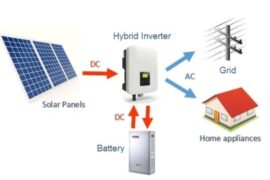Today, we will introduce how battery energy systems function in another scenario of emergency power outages, as well as the rapid response capability of battery energy systems. These systems can quickly switch to backup power, maintain normal power demand, reduce the risk of power outages, and enhance power supply reliability, which is of great significance(quotes from medcom).
Project Scenario:
A chain reaction caused by a generator failure results in the tripping of all units, leading to a power outage at the station.
Solution:
Conventional Solution:
Increase the number of units to reduce the load on each unit. However, this solution lowers equipment utilization and efficiency, increasing fuel consumption costs. Adding a gas turbine unit aims to expand the system’s total capacity, reduce overall load rates, and enhance the overall sudden load performance. This solution does not improve sudden unloading situations and is not conducive to stable gas turbine generator operation, providing limited help to stabilize frequency.
Battery Energy System Solution:
Advantages of the Solution:
☑ Utilize the excellent sudden load performance of battery energy systems to offset the impact of a single unit failure shutdown.
☑ Increase the generator unit load rate, reducing fuel costs. Design the load rate of the gas turbine unit higher to operate it in an ideal state.
☑ Stabilize frequency.
The battery energy management system with battery units can rapidly supplement power capacity when a primary gas turbine unit shuts down, preventing other units from tripping due to sudden loads. The battery energy system can also absorb excess output power from the gas turbine unit during sudden load reduction, avoiding excessive system frequency increase and protecting the gas turbine engine from shutdown due to overspeed(sources from medcom.com.pl).
Energy Management System (EMS) Decision-Maker:
The control core of the battery energy system is the EMS, responsible for functions such as data collection, network monitoring, and energy dispatch.
EMS control modules operate in two modes:
The first is active mode, where EMS controls all generator units. When EMS detects the shutdown of a gas turbine unit, it can immediately output the corresponding power to replace the recently shut-down unit. The capacity of the battery energy management system depends on the sudden load power that needs to replace the rated power of a gas turbine generator.
The second is a passive mode, where EMS does not control the generator unit’s parallel operation. It only outputs the necessary power when it detects the system frequency dropping to a certain set value to maintain stable system frequency. Whether in active or passive mode, EMS can activate backup diesel or gas generators to start and parallel load when needed.



